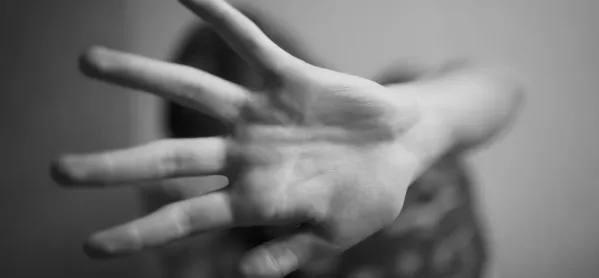
- Home
- Children ‘put at risk by often-barbaric practices’
Children ‘put at risk by often-barbaric practices’

“I would say to any teacher who has held down a young child repeatedly, without making an effort to understand them and what they need in that moment, that they’re probably in the wrong job.”
Those are the words of Barbara Irvine, whose autistic son Daniel has been repeatedly secluded or restrained in school - including once allegedly using handcuffs - since the age of 5.
Barbara and Daniel’s story features in the new In Safe Hands? campaign launched by the charity Enable Scotland to ensure that all schools - both mainstream and specialist settings - are not putting children at risk due to unacceptable restraint and seclusion practices.
Background: Commissioner calls time on seclusion in schools
Short read: ‘Special needs pupils manhandled into soft rooms’
Related: Unlawful exclusion of autistic pupils ‘widespread’
Restraint means holding a child or young person to stop them from moving; seclusion means shutting a child somewhere alone and not allowing them to leave.
Restraint and seclusion
The campaign follows the No Safe Place report published last year by Scotland’s children’s commissioner, Bruce Adamson, who used his powers of investigation for the first time and conducted a Scotland-wide investigation into the use of seclusion and restraint in schools
That investigation found 2,674 “physical interventions” relating to 386 children in the school year 2017-18. However, that figure is likely to have underestimated the use of restraint and seclusion, given that 10 local authorities failed to record all incidents, and a further four recorded none.
Ultimately, the investigation concluded that the situation was so chaotic - with incidents largely going unmonitored - that all schools should stop using seclusion as a matter of urgency until national guidelines and standards were in place.
Enable Scotland is now calling for stronger, dedicated guidance on the use of restraint and seclusion in schools; for positive support strategies - like CALM (Crisis and Aggression Limitation Management) - to be rolled out in all schools; and for “a duty of candour” to be introduced in schools so that when a child does get hurt during an incident, parents are immediately informed.
According to one mum - featured in the Enable Scotland’s In Safe Hands? campaign report - she only found out that her son was being restrained because he started screaming in his sleep.
Enable Scotland says that too often parents are left to find out that their child has been secluded or restrained because their child tells them or they observe changes in their physical appearance or behaviours.
Finally, the charity is calling for accountability and transparency to be strengthened. It points out that school inspection body Education Scotland can take an interest in seclusion and restraint but does not routinely request information about incidents as part of its inspection regime.
The charity wants a single agency to be nominated to lead “on confronting this issue”.
Ms Irvine added: “It’s difficult enough to be a parent of a child with autism, but when you and your child are labelled as being ‘difficult’, people stop listening to you. They don’t treat you like a human being, like you’re worth anything. That’s what happened to Daniel.
“Teachers just stopped trying to use the techniques that we know work and calm him down and instead hit the nuclear button of restraint straight away.”
Jan Savage, Enable Scotland’s director of external affairs, said that in the 21st century every child should be able to go to school knowing that they are safe from physical and psychological harm.
She continued: “They should feel welcome, listened to and be treated with respect from the moment they enter the school gates. To our collective shame, this is not the case for every child in Scotland.
“With the support of parents and children who have been directly impacted by this often-barbaric practice, we are calling on the Scottish government to urgently tackle the issue of restraint and seclusion through better guidance, greater support for teachers, and transparency and improved reporting from schools.
“We also want to see the nomination of a single agency to lead on confronting this issue, including the need for accurate and timely reporting of incidents.
“We believe that, together with the other objectives outlined in the In Safe Hands? report, this will make a significant difference in ensuring that no child goes to school under a cloud of fear.”
A Scottish government spokesman said: “We are not familiar with the specific details of the case mentioned, but it is obviously concerning when such methods are applied to young people.
“That is why national guidance is very clear that physical intervention, restraint and supported isolation seclusion should only ever be used as a last resort, when in the best interests of the child and never for disciplinary purposes.
“Every intervention should be carefully monitored and reviewed - and any unlawful use of physical intervention and seclusion is completely unacceptable.”
Register with Tes and you can read five free articles every month, plus you'll have access to our range of award-winning newsletters.
Keep reading for just £4.90 per month
You've reached your limit of free articles this month. Subscribe for £4.90 per month for three months and get:
- Unlimited access to all Tes magazine content
- Exclusive subscriber-only stories
- Award-winning email newsletters
You've reached your limit of free articles this month. Subscribe for £4.90 per month for three months and get:
- Unlimited access to all Tes magazine content
- Exclusive subscriber-only stories
- Award-winning email newsletters



